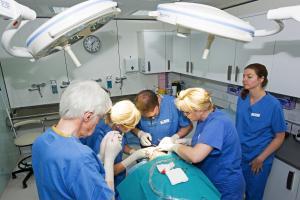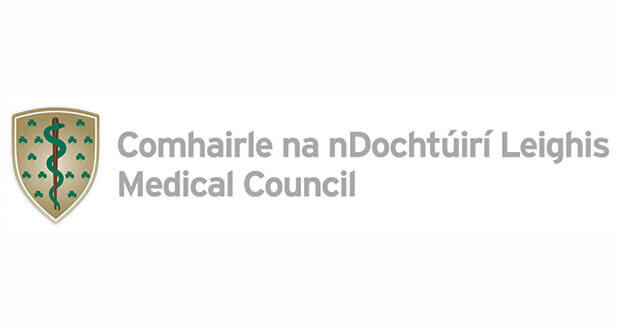Discover the differences between FUT and FUE hair transplant surgery
HRBR is an expert in Ultra Refined Follicular Unit Transplantation (URFUT) which has many advantages, one of which is producing a high yield of grafts for transplantation. Some other hair transplant clinics choose to use FUE (Follicular Unit Extraction), an alternative method of obtaining donor hair for transplantation. In this blog post we discuss the differences between FUT and FUE hair trainsplant surgery.
FUT (Follicular Unit Transplantation)
During the mid-1980s it was discovered that hair doesn’t grow individually and it is not spread out evenly across the scalp. Instead, hair grows in bundles, known as follicular units. Those units usually contain between one and four hair follicles. With the FUT technique, a strip of hair-bearing skin is taken from a donor area (usually the back of the head). The wound is stitched or sutured closed, leaving a scar that should be difficult to detect once it has healed and hair has grown over it.
This skin that has been removed is dissected in order to isolate the individual follicular units. These units, also known as grafts, are then replanted in the bald area. Hypodermic needles are used to punch tiny holes in the bald area to create recipient sites for the transplanted hair. The transplanted hair will be further apart than they were before they were moved. This allows the surgeon to attain greater coverage than what would have been achieved had the follicular units not been separated.
However, greater coverage means less density and the surgeon must always be aware of the trade-off between these two factors. The human eye cannot detect a difference between the normal density on a man’s head of around 200 hairs per square centimetre and a density of around 100 hairs per square centimetre. If the density drops below this, it will become more noticeable. Therefore the surgeon will usually ensure that the density of the transplanted hair does not drop below 50% of what it was before surgery.

Benefits of the FUT technique
With FUT, two important factors are in the surgeon’s control and a natural look is delivered. By changing the angle of the hole for the recipient hair, the surgeon can control the direction that that hair will grow. And by placing follicular units with one hair or two hairs on the hairline where they are most visible, and larger units beyond that, the surgeon can create a transition from the forehead to full thickness that makes a good hair transplant undetectable.
FUT is a very labour intensive technique. Each strip of hair-bearing skin must be dissected to isolate each individual hair follicle. This is carried out by a skilled team of technicians using powerful electronic microscopes along with tweezers and scalpels. At HRBR up to 14 skilled technicians will isolate follicles in this way throughout the day of a patient’s surgery.
A further team of six or eight will work at 30-minute intervals to insert the individual grafts in the pre-arranged pattern on the patient’s scalp. The reason for the short intense intervals is to ensure the technicians’ concentration is at an optimum during this extremely focused work. A regular FUT procedure on a patient with male pattern baldness may see 4,500 individual grafts inserted in a single day.
It is the labour intensity of FUT that makes up the bulk of the costs of the procedure. Some clinics can achieve lower cost hair transplants by employing smaller teams of grafters but that jeopardises the survival of each graft. A smaller team means that the follicular units must spend a longer time outside the body waiting to be dissected. This increases the chance of the hair units drying out or becoming infected.
The key to a successful hair transplant therefore is to have each hair follicle outside the body for as short a time as possible. That is why we remove half the strip of hair-bearing skin in the morning and the other half in the afternoon. The first grafts are planted by lunch time and the second set of grafts are planted before tea time. The alternative is to remove all the donor hair in the morning and spend the rest of the day planting. But that would mean some hair follicles are out of the body by as much as nine hours and far less likely to survive than those planted in the morning.
URFUT (Ultra Refined Follicular Unit Transplantation)
URFUT, as the name suggests, is an improved version of FUT. The distinction comes about as technology allows thinner follicular units to be cut from the donor strip and smaller incisions to be made in the planting area. Thinner follicular units ensure greater coverage and a more natural look. Smaller instrumentation allows for smaller incisions, which helps the surgeon bring the follicular units closer together, just as nature does. Another advantage or URFUT is that less damage is done to the follicles during extraction and dissection which ensures a much higher yield of grafts for transplantation. HRBR uses the most advanced microscopes (Nikon SMZ1000 stereoscopics) to achieve international gold standard URFUT results.
FUE (Follicular Unit Extraction)
FUE is an alternative method of obtaining donor hair for transplantation. Instead of removing a strip of hair-bearing skin from the scalp as normally happens with FUT, the hair is removed as individual follicular units using a special punch tool. This means the follicular units can be transplanted directly and don’t require the dissection process that is a necessary step in FUT. From the transplant stage onwards, there is no difference between the two processes, except for care of the donor area where the FUT technique will have created a linear scar.
It would be a mistake to assume that FUE does not leave a scar. Skin cannot be broken without leaving a scar. In the case of FUE, the scars are small and circular, but large in number. The area of scarring will be much larger than that from FUT. If the donor area is somewhere exposed, such as at the back of the neck, the scarring will show as an area of discolouration mostly. If the donor area is the back of the head, the patient will normally grow their hair over the scarred area rendering it unnoticeable.
It is more difficult to obtain a natural distribution of follicular units with FUE as, for ease, the larger ones are targeted. These larger follicles do not look as natural on the hairline.
Comparing the FUT and FUE hair transplantation techniques
FUE has several advantages over FUT including:
- No linear scar in the donor area.
- No sutures or staples to be removed, so a quicker recovery time.
- Less discomfort in the donor area and a quicker recovery because there is less of a wound to heal.
However, FUT has significant advantages over FUE including:
- The follicular unit graft yield of FUE is lower than with FUT, which means the patient gets less donor hair for transplantation.
- Follicular units are more likely to be damaged during FUE because the instrument blunt punch tool that is used has difficulty capturing the entire follicular unit. This further lessens the graft yield of FUE. Around 10% of the grafts can be lost in this way, compared to almost 0% when the follicles are removed from a strip under microscope.
- Not everyone is a good candidate for FUE owing to the structure of their follicular units which might be more susceptible to damage during the harvesting process.
- FUE does not leave the linear scar that results from FUT, but it does have many smaller scars that appear as small white dots. In total, FUE causes more scarring than FUT. However it should be noted that neither process produces much scarring and usually the scarred area will be hidden under hair.
- FUE takes longer than the strip procedure, sometimes twice as much time. Therefore FUE is a more expensive procedure, sometimes costing twice as much. Some of the extra costs are offset because a much smaller team is required to perform the operation.
- FUE can result in grafts being pushed into the fat on the scalp which may result in cysts.
- For transplants involving a thousand grafts or more, a large area of the patient’s head will have to be shaved.
For most hair transplant surgeries HRBR recommends FUT over FUE because it yields more living grafts and it is less expensive for the patient.
If you are suffering from hair loss and would like to discuss possible treatment options please contact us to request a consultation.
You can also follow HRBR on Twitter or on Facebook.
To read more about hair loss in men visit the ISHRS website.









